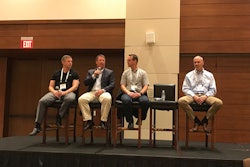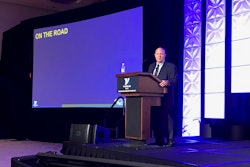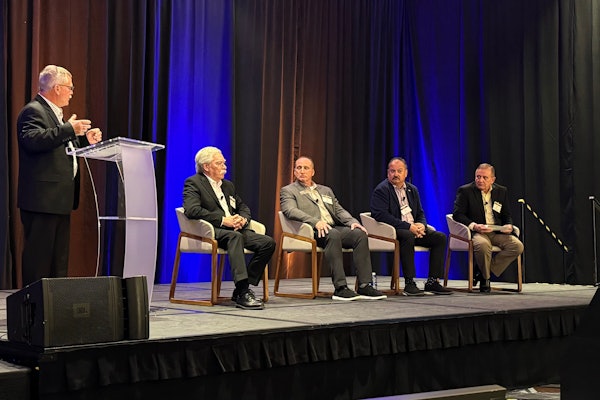 Jim Pancero speaks Tuesday at the VIPAR Heavy Duty Annual Business Conference.
Jim Pancero speaks Tuesday at the VIPAR Heavy Duty Annual Business Conference.The culture of sales is changing. Sales consultant and trainer Jim Pancero says you probably already knew that. But do you know how it’s changing, and why?
Speaking to VIPAR Heavy Duty distributors during the organization’s Annual Business Conference Tuesday in Marco Island, Fla., Pancero answered that question and more by defining the three largest trends occurring in sales, how to solve them and, most importantly, the risks associated with failing to understand or address either.
Pancero is no stranger to industrial distribution and the aftermarket. Though he’s never sold a truck part, he’s consulted in the trucking and agricultural fields for years and has keynoted at Heavy Duty Aftermarket Week (HDAW), the Commercial Vehicle Solutions Network (CVSN) Aftermarket Distribution Summit and the GenNext/CVSN Distributor Training Expo. Pancero called on those experiences Tuesday in identifying the three biggest shifts found in commercial distribution. He lists them as follows:
- The generational shift – Millennials are replacing baby boomers in the workforce;
- Sales representatives are being brought in later in the buying process;
- What customers view as a competitive advantage has evolved.
Pancero says that first shift is the most obvious but easiest to solve. He says Millennials’ approach to sales are much different than Baby Boomers and Generation X because Millennials want and accept coaching. They want guidance and to work as a team. Pancero says too often distributors lament young people aren’t interested in aftermarket distribution but aren’t doing anything in their business to draw those young employees.
The second shift, on the buying process, is harder to address because it is occurring independent from your business, Pancero says. He says customers used to come to you knowing nothing and expecting you to guide them through every step of their purchase. Now, they research what they want or need online before they’re even on your radar and don’t show up in your store until they want to bring the product home. The problem is, their research isn’t always as successful they think. Pancero says using simple probing questions with customers to ensure their research results match with their needs is a good way to bring them back on your side.
Finally, there’s the matter of competitive advantage, or disadvantage, Pancero says. He says customers today expect quality products, competitive prices and prompt, informative customer service from everyone. He says distributors can’t hang their hat on that anymore. Instead, he says it is time for distributors to move their customer service from reactive to proactive. This means offering related products, training and services customers didn’t request but can use in their operation.
Panero says, ultimately, it’s time to start thinking long term and developing a strategy past that next sales call or customer interaction. “If we sit down to play chess and I only think one move ahead and you think two moves, how many games am I going to win?” he asks.










